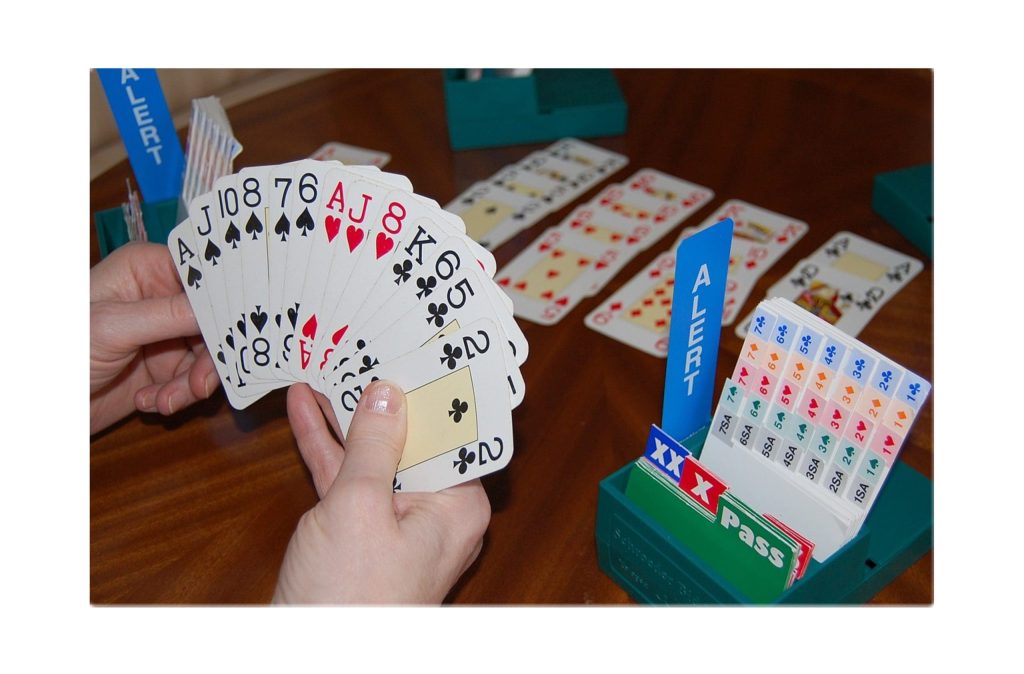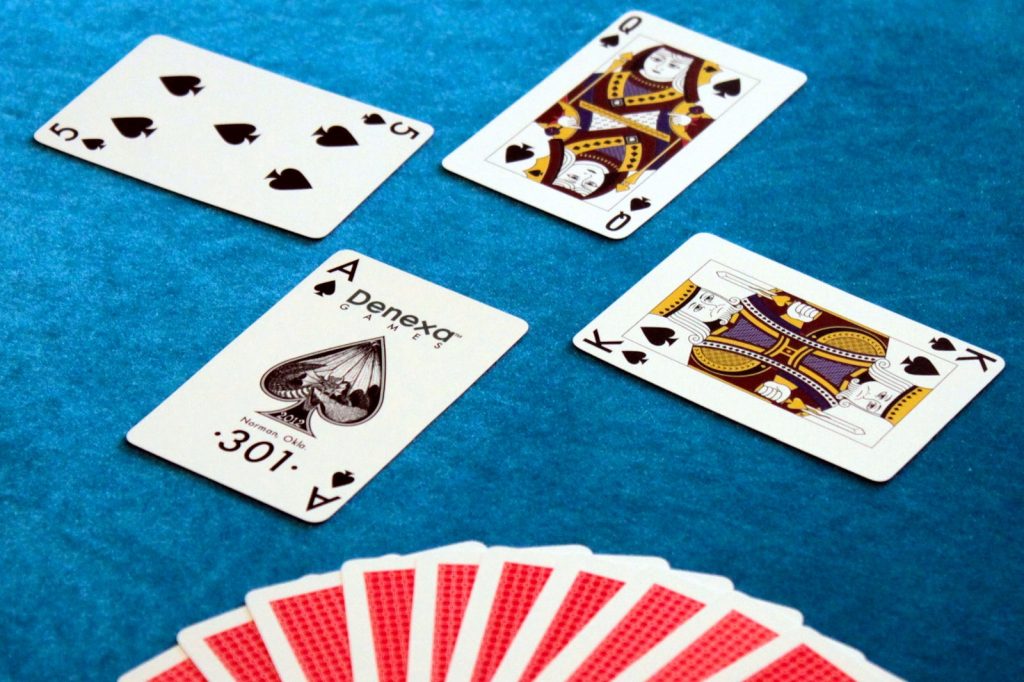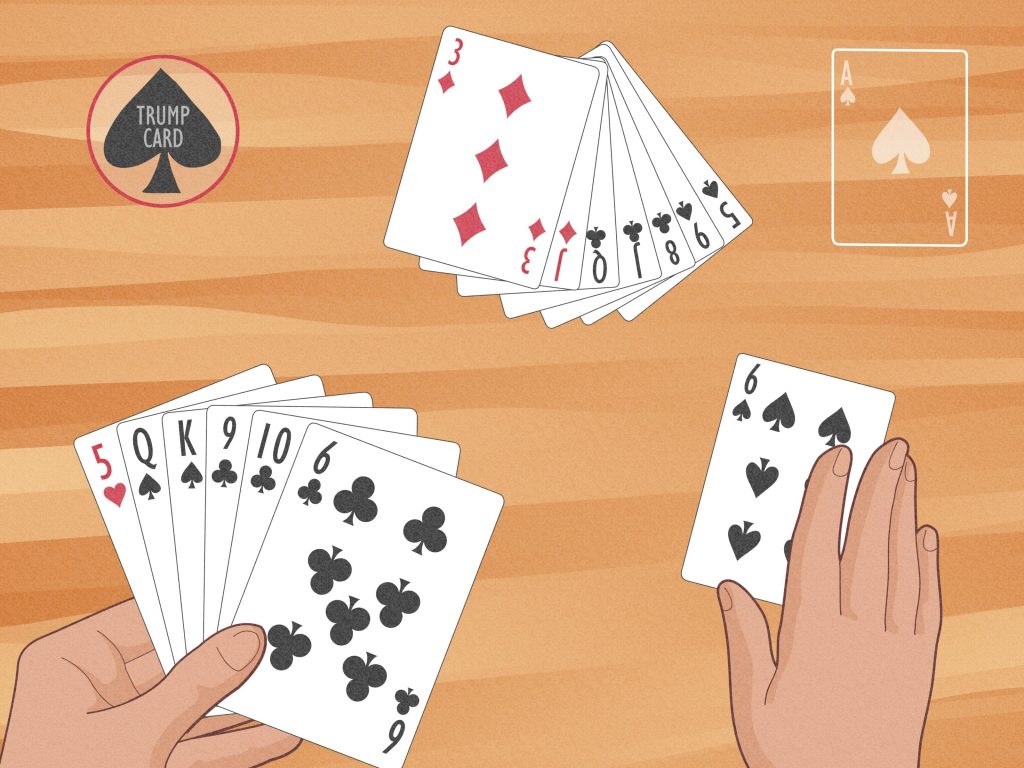Introduction
Bridge card game is one of the most popular and intellectually challenging card games played worldwide. Whether you’re a beginner or an experienced player, understanding how to score a bridge game is crucial to mastering the game. Unlike many other card games, bridge card game scoring involves both the bidding phase and the actual play, making it unique and complex.
The key to excelling in bridge lies not only in making strategic bids but also in accurately keeping track of the points scored during each deal. The scoring system can vary slightly depending on whether you’re playing rubber bridge, duplicate bridge, or Chicago bridge.
This guide will take you through everything you need to know about bridge scoring, ensuring that you gain a solid understanding of the process and can apply it effectively in your games.
Basic Elements Of Bridge Scoring

Bridge card game scoring is fundamentally based on the contracts declared during the bidding phase and whether the declarer successfully fulfills the contract or not. The score is determined by the number of tricks won, bonuses for contracts, and penalties for failing to make the required number of tricks.
The trick-taking component plays a significant role, but the complexity of the game arises from the intricate point system that assigns values to tricks, vulnerabilities, slams, and overtricks. Before diving deeper into the specifics, it is important to understand how scoring differs based on the variation of bridge you are playing.
Scoring In Rubber Bridge
Rubber bridge card game is a social version of the game played in clubs and among friends. The scoring in rubber bridge consists of two parts: the contract points and the bonus points. Contract points are awarded for each trick bid and won above the book (the first six tricks). For a successful contract, tricks in a minor suit (clubs or diamonds) are worth 20 points each, while tricks in a major suit (hearts or spades) are worth 30 points each. A no-trump contract awards 40 points for the first trick and 30 points for subsequent tricks.
A team that reaches 100 points below the line wins a game, and two games won constitute a rubber, awarding an additional rubber bonus. The rubber bonus varies based on whether the opponents have won a game or not, adding an extra layer of strategy in competitive play.
Overtricks, penalties for failing a contract, and bonuses for slams further influence the final score, making rubber bridge card game an exciting and dynamic form of the game.
Scoring In Duplicate Bridge
Duplicate bridge card game is commonly played in tournaments and club competitions, where the goal is to compare the performance of each pair against others playing the same hands. Unlike rubber bridge, duplicate bridge scoring focuses on match points or International Match Points (IMPs), depending on the format. In matchpoint scoring, pairs earn points based on how their results compare to other pairs playing the same hands.
The highest-scoring pair on a board receives the maximum matchpoints, while others receive proportionally fewer points. In IMP scoring, the difference between the scores of competing pairs is converted into a scale of International Match Points, which measures the margin of victory.
The game rewards accurate bidding, efficient play, and risk assessment, as overbidding can lead to significant penalties. Duplicate bridge card game is often considered the most strategic form of the game because it eliminates luck related to the deal of the cards and focuses solely on the skill of the players.
Scoring In Chicago Bridge

Chicago bridge card game, also known as four-deal bridge, is a variation designed for quick games, making it ideal for casual play. Unlike rubber bridge, where a rubber can take multiple hands to complete, Chicago bridge consists of exactly four hands, with scoring structured to fit this format.
The game uses a fixed vulnerability cycle, where in the first deal, no one is vulnerable; in the second deal, the dealer’s side is vulnerable; in the third deal, the dealer’s opponents are vulnerable; and in the fourth deal, both sides are vulnerable. The scoring follows rubber bridge principles, with additional game and part-score bonuses awarded. The fixed number of deals ensures that each game is fair and predictable, reducing the advantage that may arise from extended rubbers.
Trick Values And Bonus Points
The value of each trick bid and made is crucial to scoring. As mentioned earlier, minor suits (clubs and diamonds) award 20 points per trick, major suits (hearts and spades) award 30 points per trick, and no-trump contracts offer 40 points for the first trick and 30 points for each additional trick.
Additional bonuses include a game bonus for contracts worth 100 points or more and a part-score bonus for contracts below this threshold. If a player bids and makes a slam, additional bonuses are granted: a small slam (making 12 tricks) provides a 500-point bonus if not vulnerable and 750 points if vulnerable, while a grand slam (making all 13 tricks) awards 1000 points if not vulnerable and 1500 points if vulnerable. These bonuses make slam contracts a high-risk, high-reward strategy in bridge card game.
Penalties For Failing A Contract
Failing to make a contract results in penalties that the opposing team earns. If a contract is set (not made), the penalty depends on whether the declarer’s side was vulnerable or not. If not vulnerable, the opponents score 50 points per undertrick.
If vulnerable, the penalty increases to 100 points per undertrick. If the contract was doubled, the penalties become more severe, escalating from 100 points for the first undertrick to 300 points per under trick when vulnerable.
If the contract was redoubled, these penalties double again. This scoring structure discourages reckless bidding while rewarding opponents for setting the contract. Understanding how penalties work is essential in making strategic decisions about bidding and doubling opponents’ contracts.
The Role Of Vulnerability In Scoring
Vulnerability plays a significant role in bridge card game scoring by increasing both rewards and penalties. When a side is vulnerable, they receive higher bonuses for game contracts and slams, but they also suffer heavier penalties if they fail to make their contract.
Vulnerability is predetermined in duplicate and Chicago bridge card game but develops over time in rubber bridge as teams win games. A vulnerable side receives a game bonus of 500 points compared to 300 points for a non-vulnerable side, and slam bonuses also increase substantially. The strategic implications of vulnerability mean that players must carefully assess risks and rewards before bidding high-level contracts.
Doubling And Redoubling

The ability to double and redouble adds another layer of complexity to bridge card game scoring. If a declarer believes their contract is at risk, they can be doubled by an opponent. A doubled contract means that both the rewards and penalties increase significantly.
If the declarer successfully makes a doubled contract, they receive twice the normal trick value plus a substantial additional bonus of 50 points per overtrick if not vulnerable and 100 points per overtrick if vulnerable.
If a contract is redoubled, these values double again. However, if a doubled or redoubled contract fails, the penalties escalate dramatically. This aspect of scoring makes competitive bidding highly strategic, as players must balance risk and potential rewards before committing to a doubled contract.
Conclusion
Bridge card game scoring may seem complex at first, but once you understand its fundamental principles, it becomes a strategic tool rather than an obstacle. Whether playing rubber, duplicate, or Chicago bridge card game, mastering the scoring system allows you to make more informed decisions about bidding, contract selection, and risk-taking.
Knowing how different game variations assign points to contracts, overtricks, slams, and penalties helps players refine their strategy and improve their overall performance.
The depth of the bridge card game scoring system is what makes the game so compelling, as every bid and trick influences the final outcome. The next time you sit down for a game of bridge, keep these scoring principles in mind to enhance your gameplay and increase your chances of winning.

